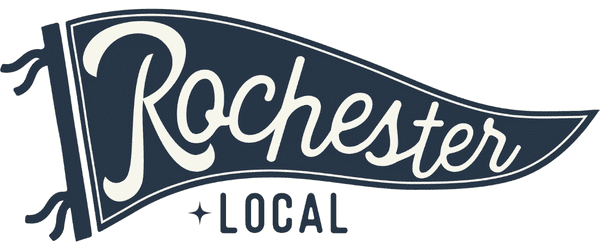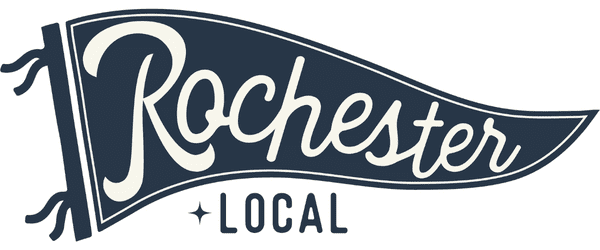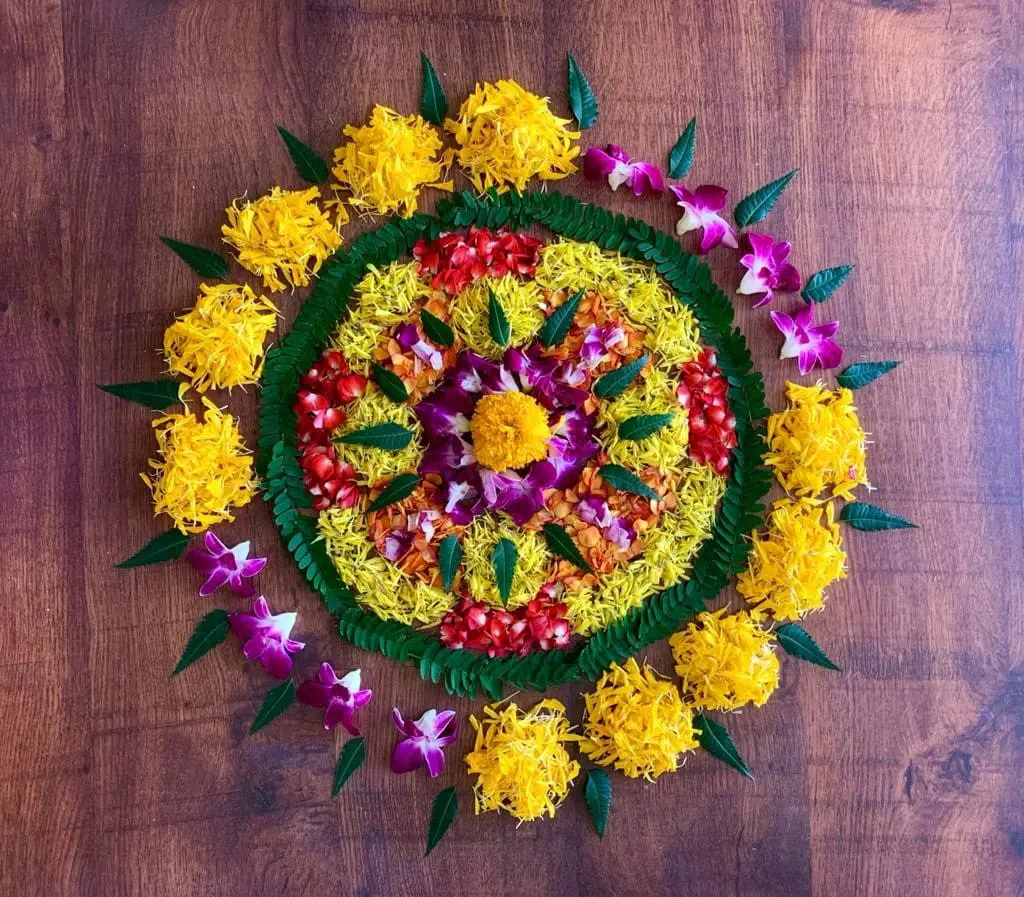
The end of summer and the beginning of fall is a special time for many. For me, it is especially joyful as it marks the beginning of my favorite Indian holiday – Onam! Please read on to learn more about this wonderful celebration and why it holds such a special place in my and countless others’ hearts.
What is Onam? Onam is a harvest festival celebrated in the South Indian state of Kerala. Although the festival has its roots in Hinduism, it is celebrated with equal vigor by people of all religions, highlighting the ‘Unity in Diversity’ principle that is so ingrained in the people of India.
The Legend: Onam marks the symbolic return of the much-loved mythological king Mahabali, whose reign was considered a golden era for Kerala. Legend has it that Mahabali returns once a year to visit his people, and thus the festival of Onam was born to celebrate his arrival in grand fashion.
Onam is celebrated over a ten-day period that falls during late August or early September (the exact dates vary from year to year). During this time, a celebratory fervor takes over the whole state. Schools are closed for ten days, most workplaces give their employees at least a few days off, and people travel to their hometowns from far and wide to celebrate with their extended families.
How is Onam celebrated?
There are numerous celebrations and activities that unfold over the Onam season, many of them with regional variations. I will try and highlight a handful of celebrations that are observed consistently across the state.
Athapoo (Flower Arrangements): This is my favorite Onam activity. For each of the ten days of Onam, families decorate their home entrances with flower arrangements on the floor, to provide a type of red-carpet welcome to King Mahabali. The arrangements start off simple in the initial days and progressively get more elaborate as the days go by. This is an activity that the whole family partakes in and is a source of much joy and fun. Now that I’m a parent, I love how easy it is to get my son interested in this activity, and by extension, foster a connection with his ethnic roots and culture.
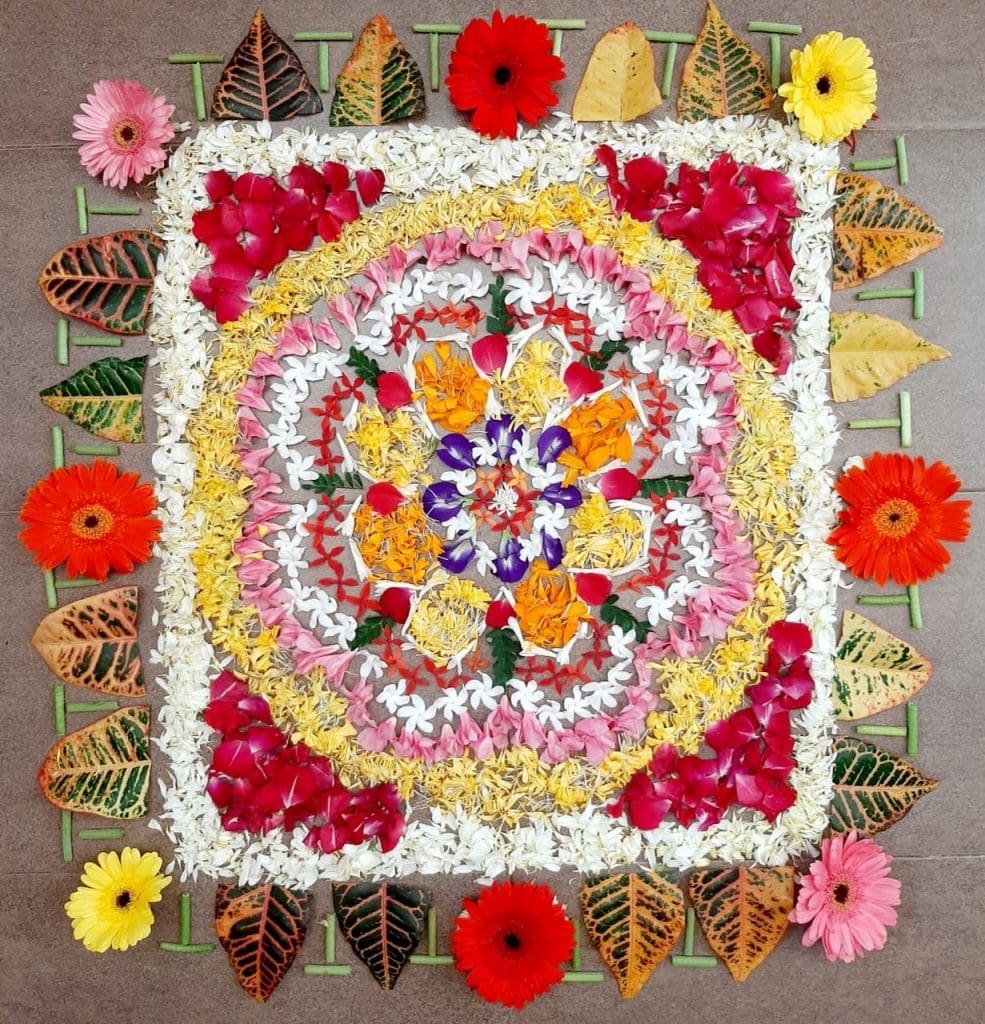
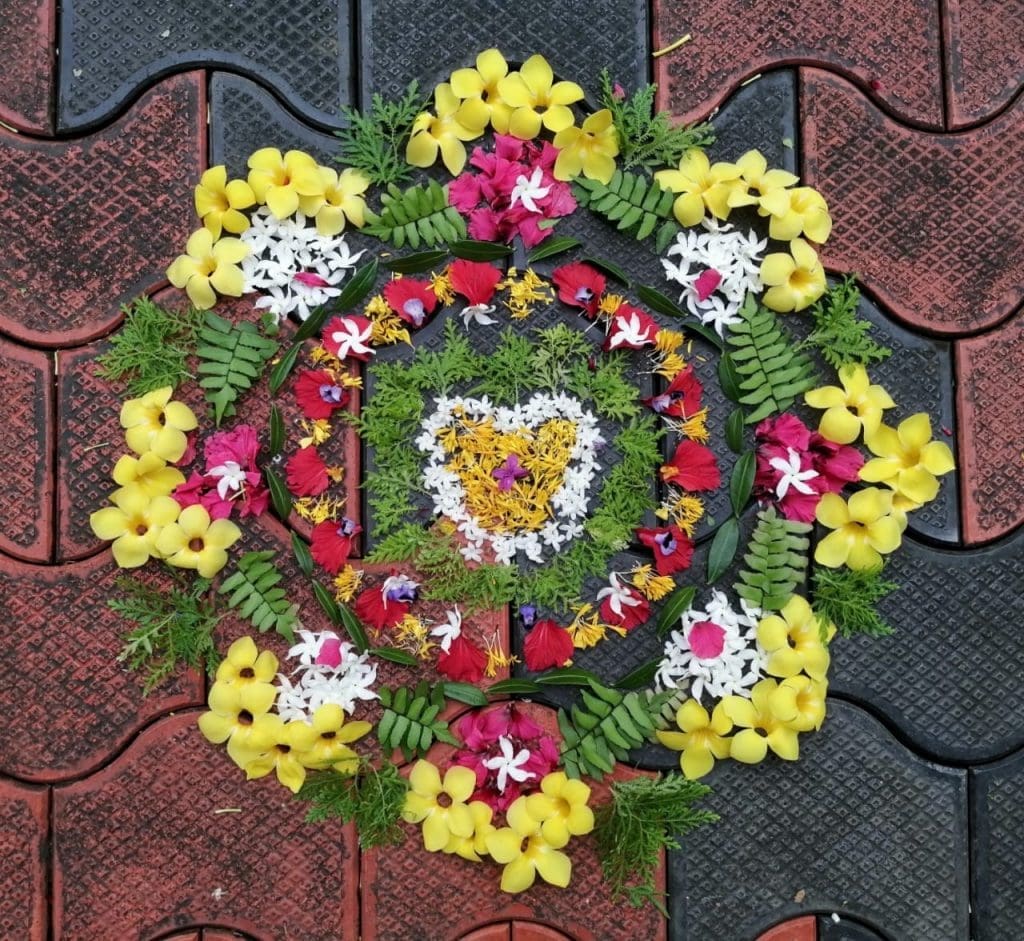
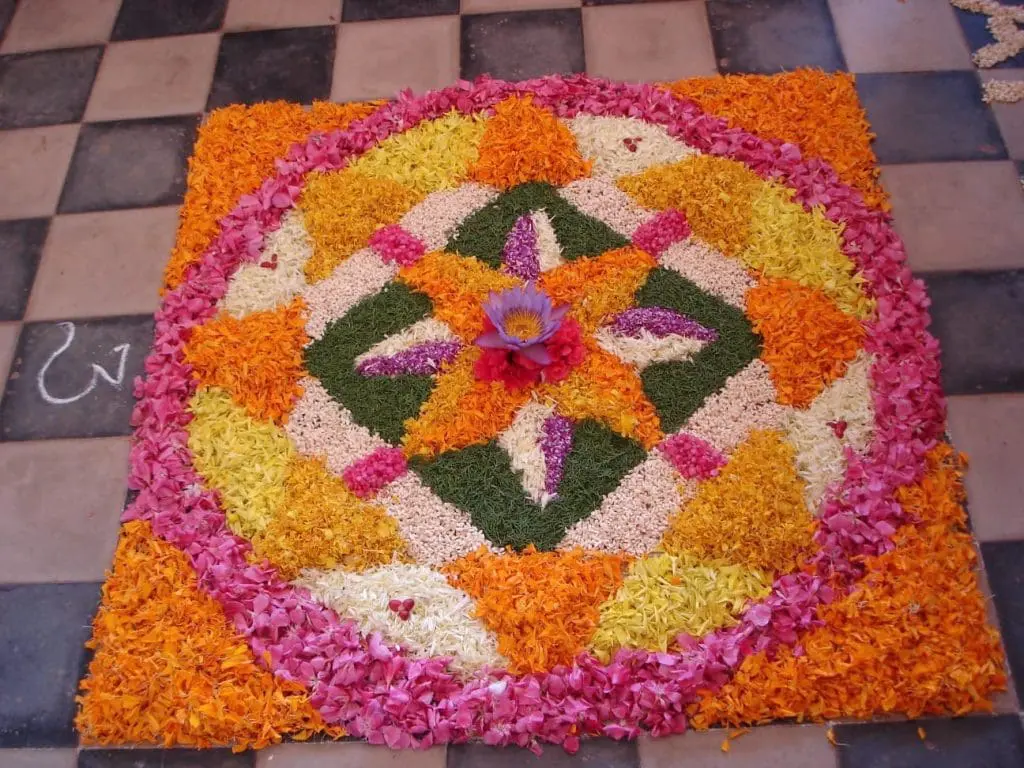
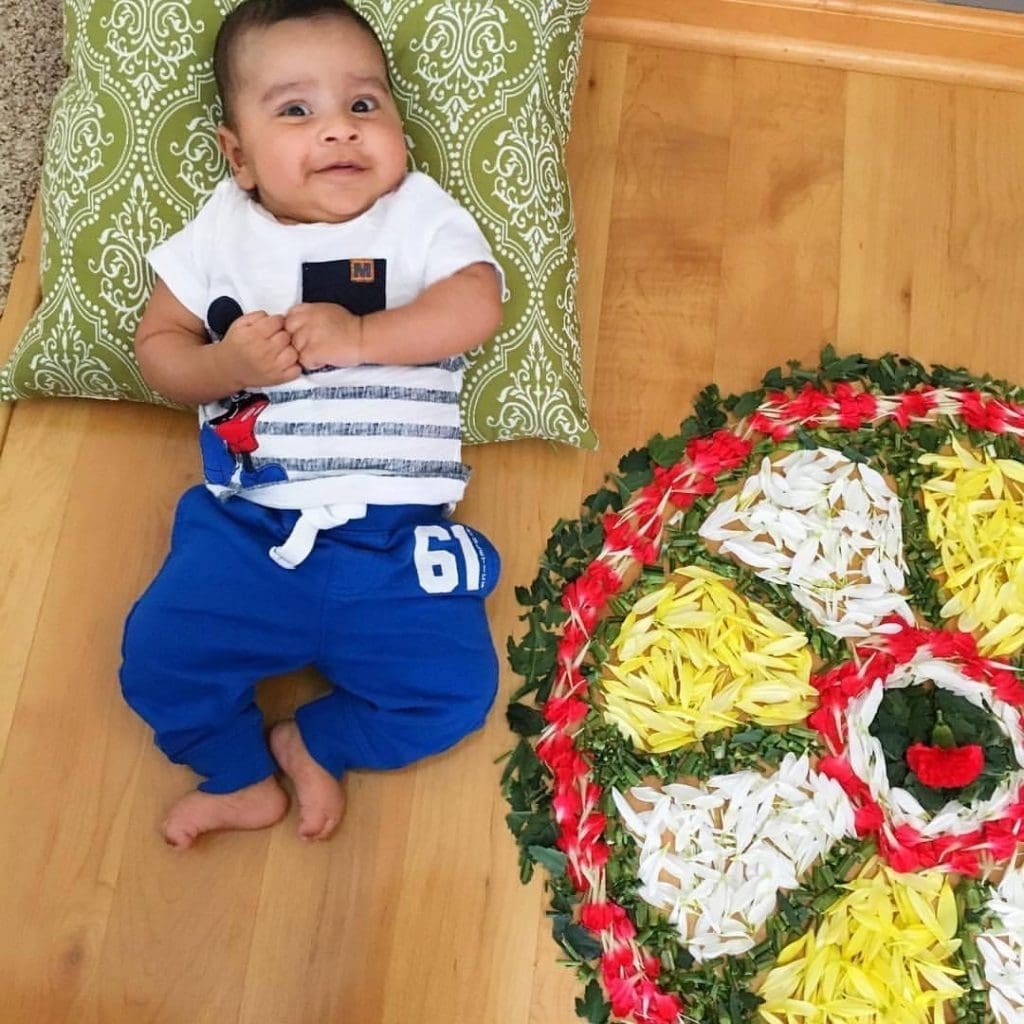
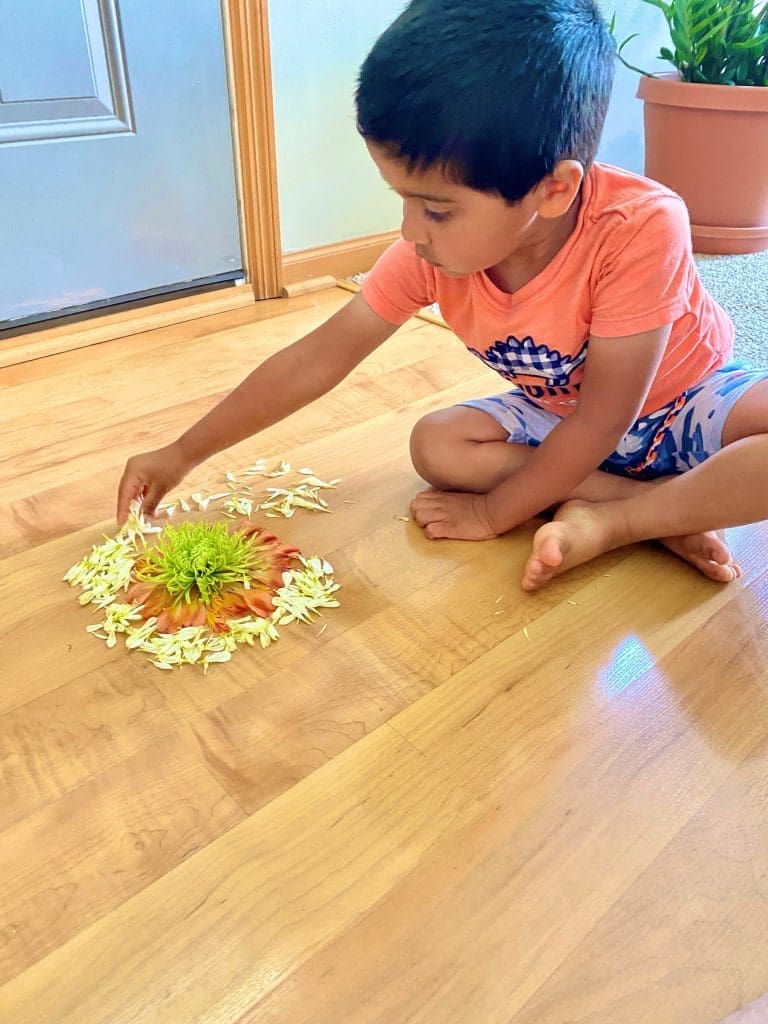
Sadya (Onam Feast): Wow – Maybe I was too quick in declaring a favorite part of Onam. The Sadya is definitely a contender for that top spot. Sadya is the elaborate, multi-course feast that is prepared and enjoyed by every Keralite family on the tenth and final day of Onam.
The Sadya is unique in that it is a fully vegetarian meal: Since Onam is a harvest festival, the Onam feast was historically an opportunity to showcase the bountiful harvest that the state has produced, and therefore veggies take center stage on the Sadya menu. The Sadya is served on banana leaves instead of plates (see pictures below – it’s truly so cool) and consists of numerous dishes, prepared painstakingly by family members who awake before the crack of dawn to get everything done in time for lunch. Traditionally, the Sadya is said to consist of 26 dishes, but in recent times I have heard of feasts that include up to 60-70 items!
For Keralites, the Sadya is so much more than just a meal. It is a labor of love, a tribute to the harmony within families, and an observance that evokes nostalgia and wistfulness for the many Keralites like me who live far away from our hometowns.
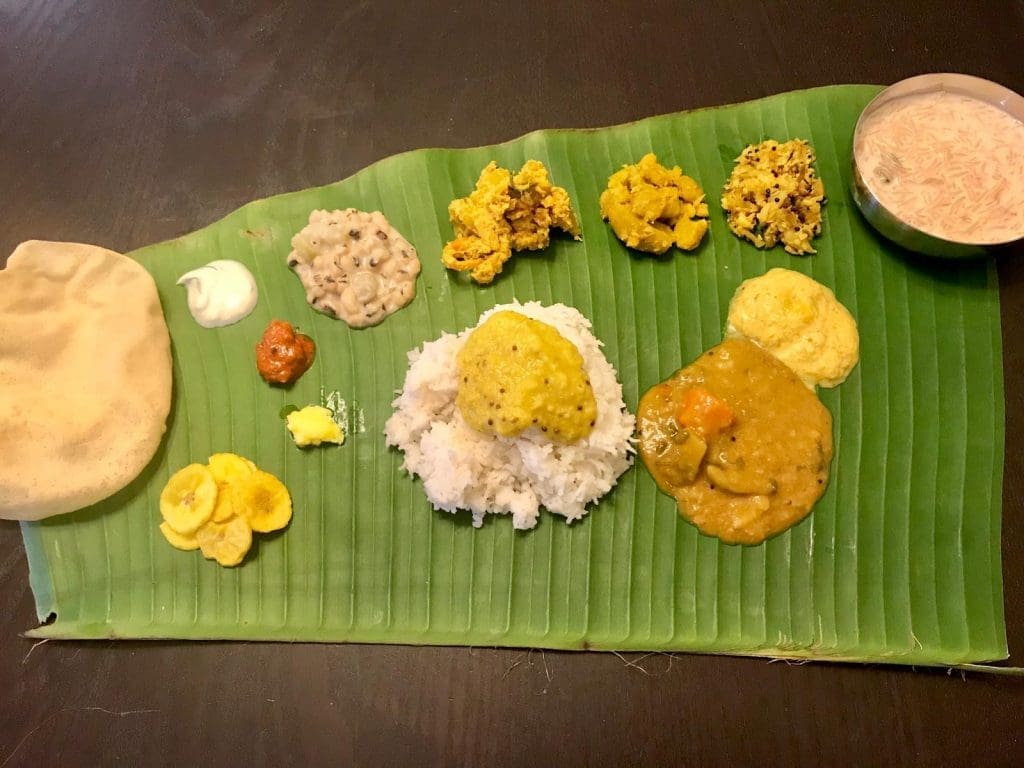
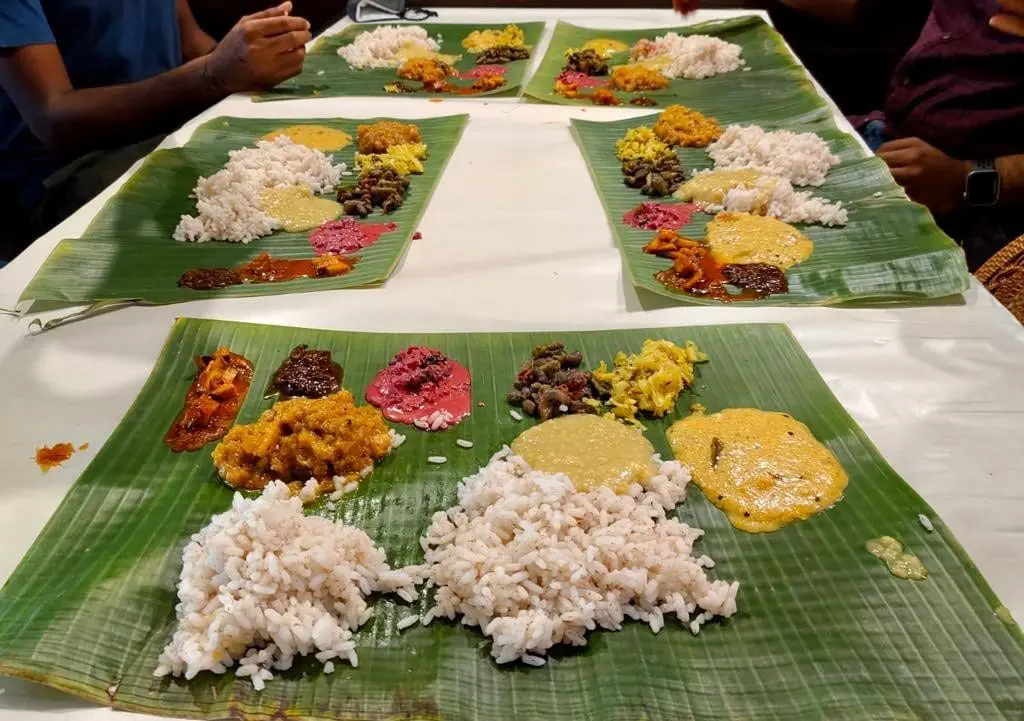
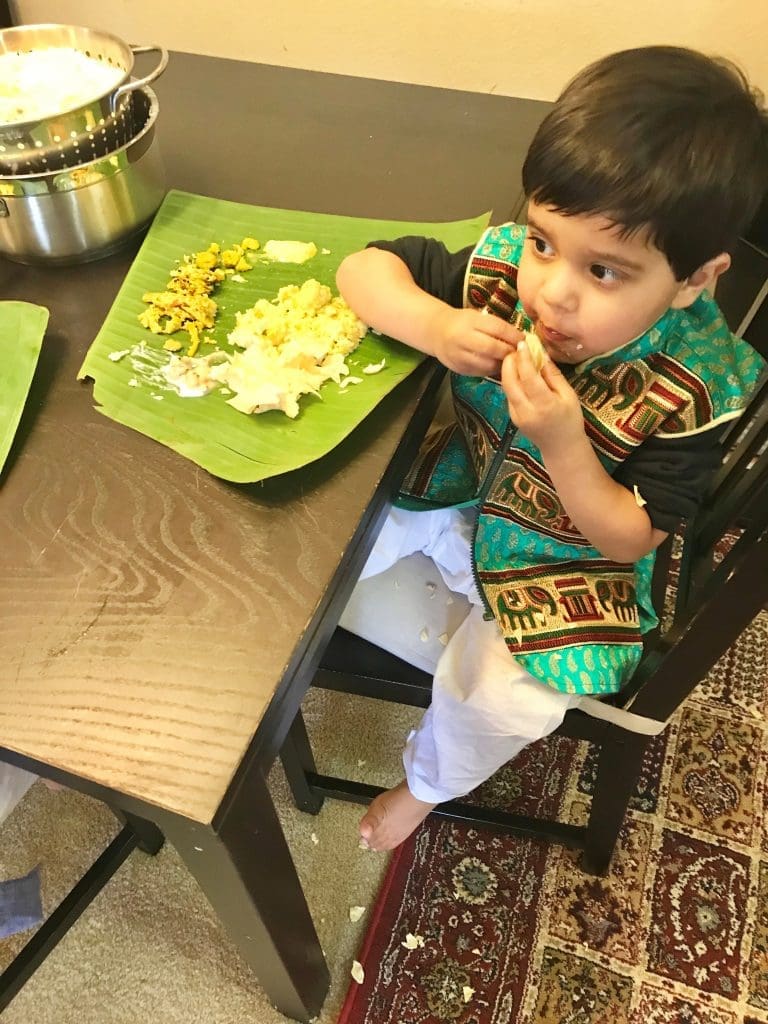
The Outfits: You know what? I think this might be my favorite part of Onam. Onam is a chance to get dressed up in your favorite traditional clothes, and in more recent times, take enough selfies to last a full year! 😊 For those of us who live abroad, this is one of the few times that we get to take ethnic clothes out of our closets, and we cherish those opportunities ever so much. Onam is also the time you receive presents (usually clothes) from your family members, so the association with clothing is particularly strong with this festival.
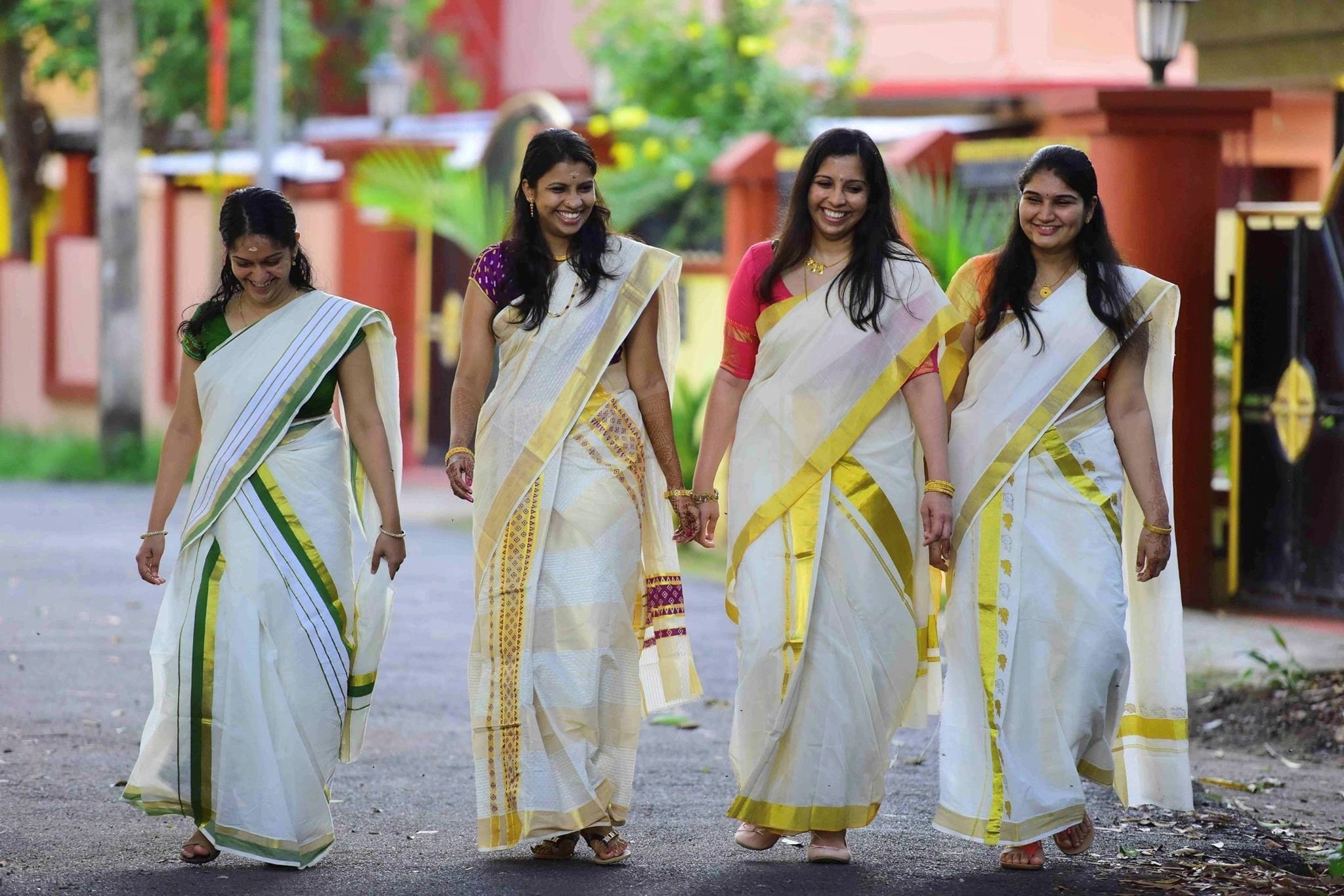
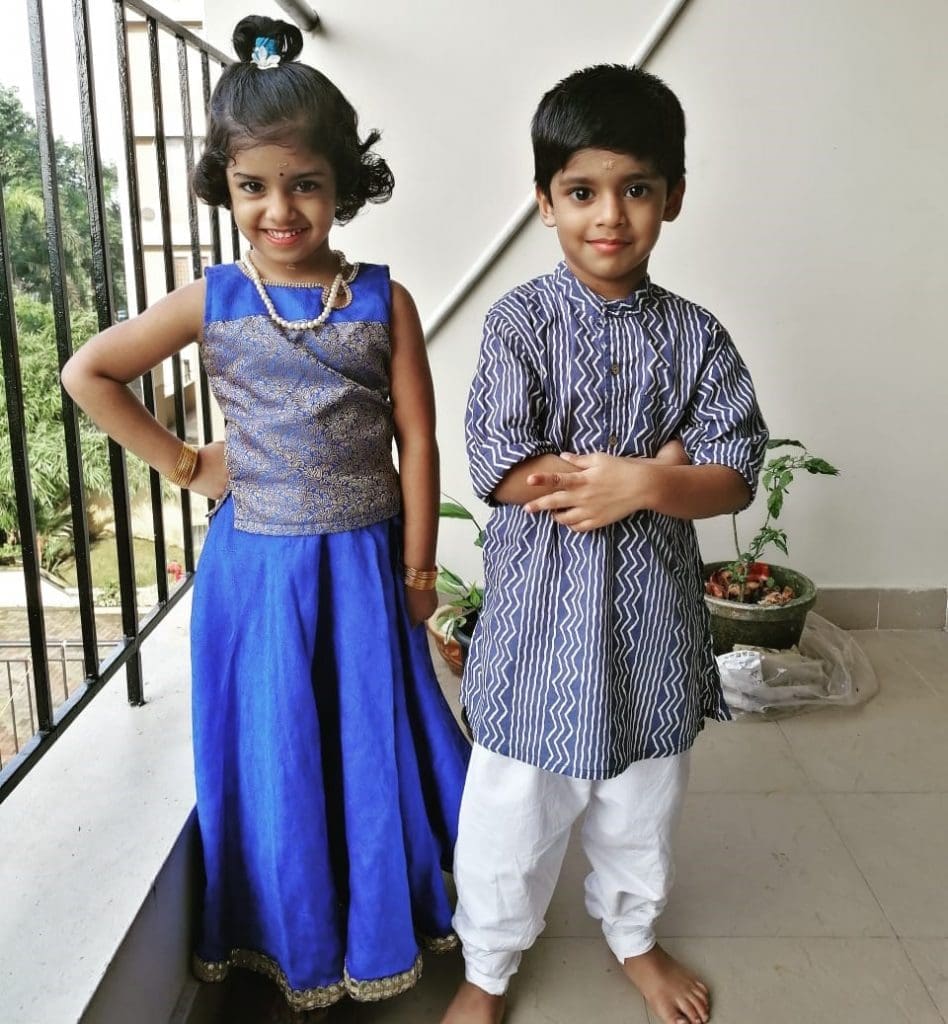
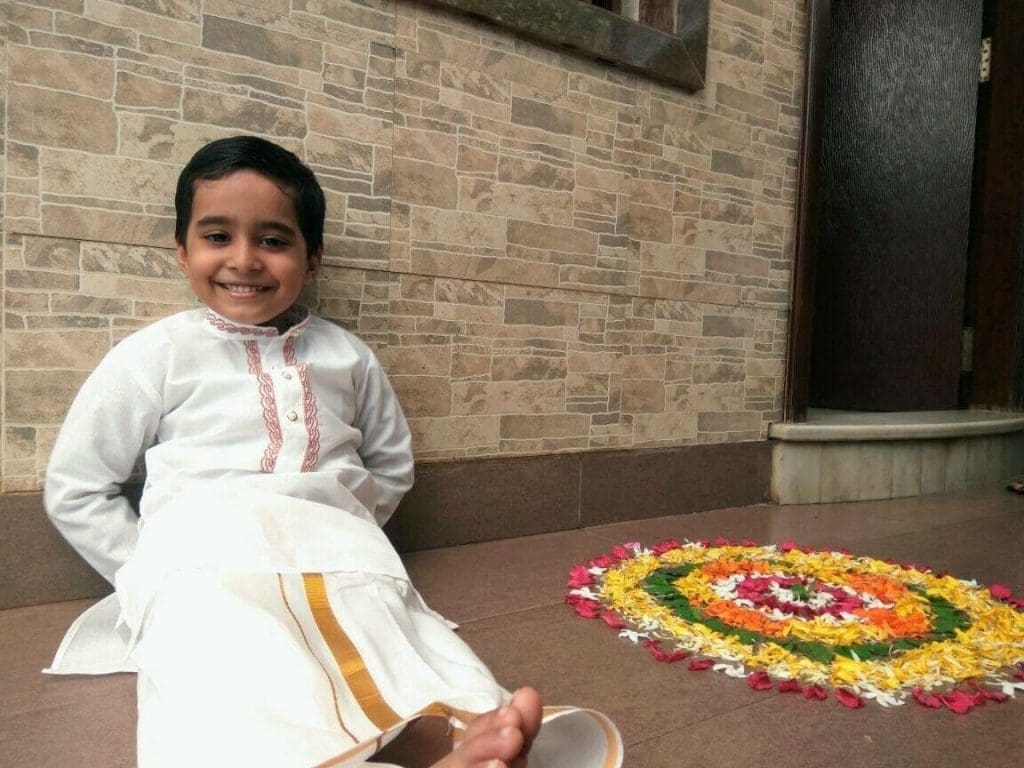
The Camaraderie: Okay – I give up. It’s impossible for me to choose a favorite aspect of Onam, I just love them all so much. One of the most heartwarming parts of Onam is seeing how it brings people together. Multiple families staying together in the same house for days, enjoying each other’s company, sharing in the cooking, and catching up on the latest family news. Cousins playing together all day, staying up way past their bedtime, going to sleep in the same room, and staying up for even longer telling scary stories until the parents beg (order?) them to go to sleep. Outside the family, the way the entire community gets into the celebrations highlights the truly inclusive and secular nature of this festival. Onam is truly a testament to the strength of families, the inclusiveness of communities, and the spirit of harmony and joyous co-existence of humankind.
This year, we celebrate Onam from August 12 – August 21, with Thiruvonam, the tenth day of Onam falling on Saturday, August 21. To those who are unfamiliar with Onam, I hope you enjoyed reading about this cherished celebration from a tiny coastal state in Southern India. To my fellow Keralites who celebrate Onam, I wish you a very happy Onam filled with joy and togetherness. Onashamsakal!
